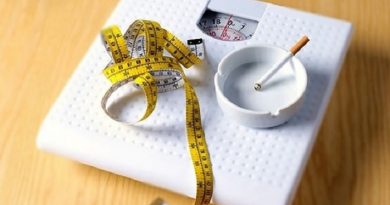Exploring Modern Advances in Plastic Surgery
Whether meeting the high demand for popular cosmetic treatments or exploring new possibilities in innovative procedures, plastic surgeons constantly push the boundaries of what is possible. Here’s a look at some of the most exciting advances in the field.
Advanced weaponry in WWI caused massive facial injuries, and pioneering plastic surgeon Sir Harold Gillies developed techniques like tubed pedicles to transplant skin and tissue. These methods saved many lives and helped restore men’s confidence and morale.
Stem Cell Therapy
Stem cells are specialized cells that can grow and transform into different cell types. They are also known as progenitor cells and have the internal potential to regenerate damaged tissues in your body.
Stem cell therapy can treat a wide range of diseases and disorders. These include haemato-poetic, cardiovascular, tumor, metabolic, immune, nervous, bone-joint, and genetic diseases.
For plastic surgery, stem cells can be used for tissue regeneration and filling defects of skin and bones. They can also be used in breast reconstruction and treatment of chronic wounds.
This method of tissue reconstruction involves taking stem cells from the patient’s blood or bone marrow and injecting them into the area that needs repair. Stem cell transplantation can be autologous (from the same patient), allogeneic, or cord blood donor. Bone marrow stem cells are harvested through a needle inserted into the soft center of the hip bone — usually under general anesthesia.
Computer-Assisted Imaging
Computer-assisted imaging allows surgeons like Dr. Joel Aronowitz to visualize structures within the body. This will enable them to better plan and execute surgical procedures with less risk of complications. This technology can also help reduce recovery times.
The technique uses a computer model of the skeletal structure to direct implant positioning. This is accomplished through registration and tracking. For example, in a knee replacement surgery (TKA), specific anatomic reference points are determined by fixing signaling transducers with pins to the femur and tibia. These transmit signals to a computer that matches the shapes of the bone surface model with digitized surface data points on the distal femoral and tibial plateaus.
In addition to its utility in craniofacial surgery, the authors foresee that VSP-CAD will become increasingly common in reconstructive breast reconstruction and upper extremity neuroprostheses. It may also be useful in planning and predicting outcomes for tissue-engineered nerve grafts in hand and peripheral nervous surgery. It can also be used to design and fabricate prefabricated implants.
Fat Grafting
Fat grafting, or autologous fat transfer/transplantation or liposculpture, uses the patient’s body fat as an injectable natural filler. Unlike other implant substances, the patient’s body accepts and tolerates this treatment.
The process involves extracting adipose fat by liposuction, purifying it, and reinjecting it into the target area. Fat grafting needed help gaining acceptance early on due to inconsistencies in liposuction techniques and the quality of harvested fat. Still, results have dramatically improved with improved methods for separating and processing fat cells.
The procedure can be used to optimize the results of larger reconstructive or cosmetic procedures or as a stand-alone technique. During the course, both the donor and recipient sites are numbed using local anesthesia. The fat is withdrawn through a cannula and syringe; then, it’s processed to remove blood cells before it’s injected into the target site. This minimally invasive treatment can help soften the nasolabial folds or add volume to the cheeks.
Regenerative Medicine
Regenerative medicine is a broad term that covers a variety of technologies and treatments, including cell therapy, tissue engineering, and biomechanical prosthetics. This field focuses on restoring health by improving and replacing diseased cells, tissues or organs to restore normal function.
For example, plastic surgeons like Joel Aronowitz MD are pioneering techniques to re-grow new bone tissue to help patients suffering from extensive facial or limb trauma. They also forge new paths in regenerative therapies that reconnect severed nerves to power artificial limbs.
Regenerative medicine techniques are revolutionizing traditional reconstructive surgery. For example, a major scientific breakthrough enabled surgeons to regenerate soft tissue over barren skull bones using the patient’s cells, a porous synthetic tissue scaffold and growth factor infusions. This shortened the surgical procedure and reduced healing time. It also reduced the need for toxic immunosuppressive drugs. The results were remarkable.



